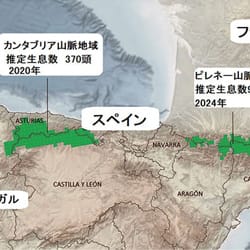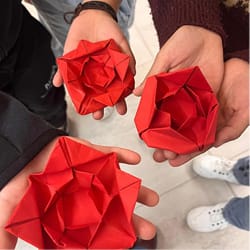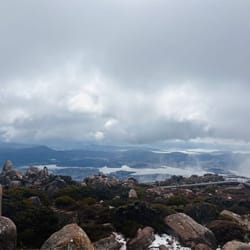Spain is described as a top international tourist destination and ranks 5th for the number of World Heritage sites. But is this global standard being used to set entry fees at popular World Heritage sites, monuments, churches, art museums, and so on?
Take for example the Sagrada Família, a World Heritage church in Barcelona, where the entry fee is set at a flat 34 euros (about 5,800 yen), regardless of nationality or place of residence. Some 4,707,367 people visited in 2023. Of those, 85% were foreigners and about 15% of the total were Spanish visitors, from the home country. There would have been an enormous increase in revenue if the entry fee for foreigners had been set to 4 times the current amount, as is being considered by certain sightseeing destinations in Japan, and foreign tourists on a budget, like backpackers, might have given up on going inside and made do with just taking photos of the exterior, right?
By the way, the church has no public funding support but self-funds its costs of building, conserving, repairing, operating, and so on through entry fees, donations from parishioners and the faithful, promotional activities, merchandise sales, etc. After the Tower of Jesus Christ, the main spire, is completed in 2026, the church is scheduled for eventual completion in 2034 with the completion of the Glory Façade at the front entrance. Incidentally, 2 parts of the entire church are on the World Heritage list, parts in whose construction the designer Gaudi was directly involved, namely the Nativity Façade (photo 1) and the crypt (photo 2). You can take photos of the Nativity Façade from outside the fence, so that doesn’t cost you the entry fee, but you can’t do that with the underground chapel.

Photo 1

Photo 2
The next example is the Alhambra Palace, a World Heritage site in Granada, Andalusia. So many visitors swarm to this palace that they are limiting the annual number of visitors to 2,763,500, with the aim of preserving the buildings and surroundings, and alleviating congestion. Unless a special event or the like has been planned, the palace is closed only on Christmas Day (25 December) and New Year’s Day (1 January), so with simple arithmetic, the number of visitors per day is limited to 7,613. They have a prebooking system, so it seems the real number of visitors per day is probably limited to 6,000. The entry fee is a flat 19.09 euros (about 3,250 yen), regardless of nationality or place of residence. In 2023, the number of visitors was 2,600,000 and the percentage of foreign visitors was 63.9.
One of the palace’s features is that it has been completed as what has even been described as the best masterpiece of Arabian architecture. While using readily available materials like bricks, plaster, tiles, and so on apart from the floors and pillars and some wall surfaces, as far as possible no expensive and precious building materials like marble have been used, like most other palaces and castles. Given the fragility of the materials, deterioration over time has been rapid, and while the cost of works to preserve, repair, and restore the palace mounts up, they don’t even seem to be ready to think that they should collect more funds from foreigners, who account for the majority of visitors, by setting a dual pricing system. In photo 3, plaster is used for a ceiling that replicates stalactites in the cave where Muhammad, the founder of Islam, received revelations from God. Photo 4 shows arabesque interior decoration with motifs such as Holy Quranic excerpts, geometric patterns, and flowering plants.

Photo 3

Photo 4
An unforgettable popular Spanish sightseeing spot would be the “Museo Nacional del Prado” (the national Prado Museum of art), in the capital Madrid. A precinct that includes this art museum has been registered on the World Heritage list as a cultural landscape. The entry fee is a flat 15 euros (about 2,550 yen), regardless of nationality or place of residence. In 2023, the total number of museum visitors was 3,337,550. What’s distinctive about this museum is that a surprising 48.2% of all visitors enter free of charge. It might be the museum with the highest number of visitors who enter free of charge in Europe. Here too, the entry fee is based on the Spanish standard, not a global standard, and doesn’t differentiate foreigners. Photo 5 is the present-day Prado Museum. Although it isn’t in the photo, the neighboring “Salón de Reinos” (Hall of Realms) is currently being restored and remodeled.

Photo 5
(Note: Although I’ve said flat rate fee, different tourist destinations offer discounts or free entry, regardless of nationality, to seniors, groups, students, people with a disability, large families, employees of the museum (etc.), researchers, unemployed people, and so on.)
Looking at other monuments apart from the 3 representative Spanish examples, I cannot find any example of a tourist destination with dual pricing based on nationality or place of residence. Is perhaps Spain an outlier after all, separate from international standards? Quite aptly, maybe Napoleon’s claim, “Europe ends at the Pyrenees,” is not necessarily an exaggeration.
I am aware that this is superfluous, however, the first thing that springs to mind when I hear “dual pricing in Japan” is the pricing of Japan Rail Passes, which the 6 Japan Railways companies issue to overseas visitors to Japan.
You are eligible if you are:
• a foreign national permitted to stay in Japan for a short term of 15 to 90 days, or
• a Japanese national who has resided overseas continuously for at least 10 years.
The validity periods are 7, 14, and 21 days. There are passes for either standard or Green cars. They are exceedingly good value tickets allowing unlimited travel and include the limited express fare and the seat reservation fee across all 6 JR company railway lines (including JR Bus, JR Ferry, and some private railway zones): 50,000 yen for an adult (25,000 yen for a child [between 6 and 12 years of age]) traveling on standard cars for the shortest period, 7 days; and even traveling on Green cars it’s 140,000 yen for an adult (70,000 yen for a child) for the longest period, 21 days. There are exceptions, when you travel on the Nozomi or Mizuho bullet trains or use a sleeper car, which demands additional fees.
Let’s say you go on an “Osaka-Hokkaido Bullet Day Return Trip on the Bullet Train,” leaving Shin-Osaka Station at 06:08, arriving at Shin-Hakodate-Hokuto Station at 13:33, optionally purchasing a 1,180-yen “Nishin Migaki Bento” (“Soy Sauce-Simmered Herring Lunchbox”) inside the station, then coming back on the return bullet train from Shin-Hakodate-Hokuto Station at 14:48, arriving at Shin-Osaka Station at 21:48. It would cost a Japanese national residing in Japan 67,280 yen (including seat reservation fee), but a holder of a Japan Rail Pass valid for 7 days on ordinary trains, which they have already paid 50,000 yen for, has used up more than that value in just one day and can continue traveling as much as he or she likes for the remaining 6 days. This dual pricing is giving exceptionally favorable treatment to foreigners and is contributing to the expansion of inbound tourism.
To a Japanese national who has spent a long time living outside Japan, a JR Pass is a powerful ally when returning home for a brief time, so I am forced to confess to being in the position of one who welcomes with open arms this global standard dual pricing of JR Passes. I humbly pray that the JR Companies continue sales of these passes for many years to come.






























































